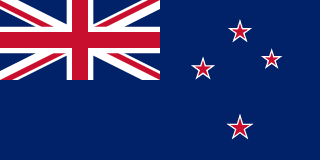New Zealand - Economy

How is the economy of New Zealand? Based on the information we have, New Zealand has a
high-income, globally integrated Pacific island economy; strong agriculture, manufacturing, and tourism sectors; reliant on Chinese market for exports; recovery trajectory following deep post-pandemic recession; challenges of fiscal deficits, below-average productivity, cost of living, and drop in net migration
. Key agricultural products in this country include: milk, beef, kiwifruit, apples, grapes, lamb/mutton, potatoes, wheat, barley, chicken (2023).More about the economy of New Zealand
| Labor force | 3.124 million (2024 est.) |
|---|---|
| Industrial production growth rate | -1% (2023 est.) |
| Industries | agriculture, forestry, fishing, logs and wood articles, manufacturing, mining, construction, financial services, real estate services, tourism |
| Population below poverty line | |
| Taxes and other revenues | 29.6% (of GDP) (2022 est.) |
| Fiscal year | |
| Exchange rates | |
| Currency | New Zealand dollars (NZD) per US dollar - |
| Exchange rates 2024 | 1.652 (2024 est.) |
| Exchange rates 2023 | 1.628 (2023 est.) |
| Exchange rates 2022 | 1.577 (2022 est.) |
| Exchange rates 2021 | 1.414 (2021 est.) |
| Exchange rates 2020 | 1.542 (2020 est.) |
| Reserves of foreign exchange and gold | |
| Reserves of foreign exchange and gold 2024 | $22.065 billion (2024 est.) |
| Reserves of foreign exchange and gold 2023 | $15.487 billion (2023 est.) |
| Reserves of foreign exchange and gold 2022 | $14.4 billion (2022 est.) |
| Current account balance | |
| Current account balance 2024 | -$15.978 billion (2024 est.) |
| Current account balance 2023 | -$17.065 billion (2023 est.) |
| Current account balance 2022 | -$21.627 billion (2022 est.) |
| Public debt | |
| Public debt 2022 | 54% of GDP (2022 est.) |
| Budget | |
| Revenues | $83.167 billion (2022 est.) |
| Expenditures | $91.782 billion (2022 est.) |
| Budget surplus (+) or deficit (-) | |
| Remittances | |
| Remittances 2023 | 0.3% of GDP (2023 est.) |
| Remittances 2022 | 0.2% of GDP (2022 est.) |
| Remittances 2021 | 0.3% of GDP (2021 est.) |
| Average household expenditures | |
| On food | 12.8% of household expenditures (2023 est.) |
| On alcohol and tobacco | 4.7% of household expenditures (2023 est.) |
| Imports | |
| Imports 2024 | $67.998 billion (2024 est.) |
| Imports 2023 | $68.412 billion (2023 est.) |
| Imports 2022 | $71.35 billion (2022 est.) |
| Imports (partners) | China 20%, Australia 11%, USA 9%, S. Korea 7%, Japan 7% (2023) |
| Comodities Imports force | refined petroleum, cars, gas turbines, broadcasting equipment, trucks (2023) |
| Exports | |
| Imports 2024 | $67.998 billion (2024 est.) |
| Imports 2023 | $68.412 billion (2023 est.) |
| Imports 2022 | $71.35 billion (2022 est.) |
| Exports (partners) | China 28%, USA 12%, Australia 12%, Japan 6%, S. Korea 3% (2023) |
| Comodities Exports force | milk, wood, beef, butter, sheep and goat meat (2023) |
| Real GDP (purchasing power parity) | |
| Real GDP (purchasing power parity) 2024 | $257.117 billion (2024 est.) |
| Real GDP (purchasing power parity) 2023 | $257.443 billion (2023 est.) |
| Real GDP (purchasing power parity) 2022 | $253.903 billion (2022 est.) |
| GDP (official exchange rate) | $260.236 billion (2024 est.) |
| Real GDP Per capita | |
| Real GDP per capita 2024 | $48,200 (2024 est.) |
| Real GDP per capita 2023 | $49,100 (2023 est.) |
| Real GDP per capita 2022 | $49,600 (2022 est.) |
| GDP - composition, by sector of origin | |
| Agriculture | 4.6% (2022 est.) |
| Industry | 19.6% (2022 est.) |
| Services | 67.4% (2022 est.) |
| GDP - composition, by end use | |
| Household consumption | 57.5% (2022 est.) |
| Government consumption | 20.9% (2022 est.) |
| Investment in fixed capital | 25.4% (2022 est.) |
| Investment in inventories | 0.9% (2022 est.) |
| Exports of goods and services | 24% (2022 est.) |
| Imports of goods and services | -29.4% (2022 est.) |
| Unemployment rate | |
| Unemployment rate 2024 | 4.9% (2024 est.) |
| Unemployment rate 2023 | 3.8% (2023 est.) |
| Unemployment rate 2022 | 3.3% (2022 est.) |
| Youth unemployment rate (ages 15-24) | |
| Total | 14.3% (2024 est.) |
| Male | 14.6% (2024 est.) |
| Female | 14% (2024 est.) |
All Important Facts about New Zealand
Want to know more about New Zealand? Check all different factbooks for New Zealand below.
-
 New Zealand Factbook
New Zealand Factbook
-
 The Economy of New Zealand
The Economy of New Zealand
-
 Learn about the Government of New Zealand
Learn about the Government of New Zealand
-
 Communication in New Zealand
Communication in New Zealand
-
 Popular Universities in New Zealand
Popular Universities in New Zealand
-
 Enerny in New Zealand
Enerny in New Zealand
-
 Transport in New Zealand
Transport in New Zealand
-
 The Geography and society of New Zealand
The Geography and society of New Zealand
-
 The Environment of New Zealand
The Environment of New Zealand
-
 Military and security in New Zealand
Military and security in New Zealand